-
 Bitcoin
Bitcoin $82,422.7980
-3.07% -
 Ethereum
Ethereum $1,847.8527
-2.37% -
 Tether USDt
Tether USDt $0.9994
-0.04% -
 XRP
XRP $2.0729
-6.17% -
 BNB
BNB $603.0129
-4.27% -
 Solana
Solana $125.3687
-4.58% -
 USDC
USDC $1.0004
0.03% -
 Dogecoin
Dogecoin $0.1703
-5.67% -
 Cardano
Cardano $0.6675
-4.70% -
 TRON
TRON $0.2337
1.58% -
 Toncoin
Toncoin $3.6865
-7.87% -
 Chainlink
Chainlink $13.6905
-4.32% -
 UNUS SED LEO
UNUS SED LEO $9.7096
-1.12% -
 Avalanche
Avalanche $19.8706
-2.17% -
 Stellar
Stellar $0.2655
-3.47% -
 Shiba Inu
Shiba Inu $0.0...01270
-3.93% -
 Sui
Sui $2.3342
-8.15% -
 Hedera
Hedera $0.1705
-6.89% -
 Litecoin
Litecoin $85.5696
-2.75% -
 Polkadot
Polkadot $4.0949
-4.43% -
 MANTRA
MANTRA $6.3176
-1.29% -
 Bitcoin Cash
Bitcoin Cash $303.0131
-2.84% -
 Bitget Token
Bitget Token $4.6537
-1.96% -
 Pi
Pi $0.8221
-0.20% -
 Dai
Dai $0.9999
0.00% -
 Ethena USDe
Ethena USDe $0.9992
0.04% -
 Hyperliquid
Hyperliquid $12.4886
-9.08% -
 Monero
Monero $215.7733
-2.33% -
 Uniswap
Uniswap $6.0537
-4.22% -
 Aptos
Aptos $5.3582
-2.68%
How to set stop loss and take profit in Bitcoin leverage trading?
Mastering Bitcoin leverage trading requires understanding stop-loss and take-profit orders, leveraging market analysis for precise order placement, and managing risks via position sizing and order types to mitigate slippage and fees.
Mar 24, 2025 at 02:42 pm
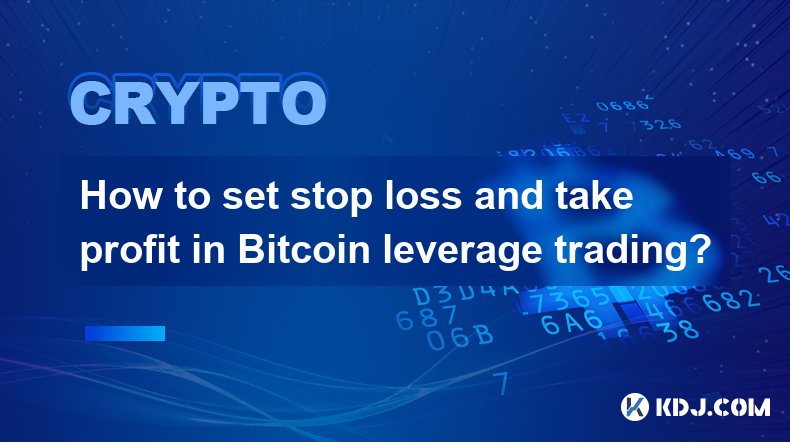
Key Points:
- Understanding leverage and its risks in Bitcoin trading.
- Defining stop-loss and take-profit orders and their importance.
- Setting appropriate stop-loss and take-profit levels based on market analysis.
- Utilizing different order types for stop-loss and take-profit execution.
- Managing risk effectively through proper order placement and position sizing.
- Considering the impact of slippage and fees on order execution.
How to Set Stop Loss and Take Profit in Bitcoin Leverage Trading?
Bitcoin leverage trading offers the potential for significant profits but also carries substantial risks. Understanding how to effectively use stop-loss and take-profit orders is crucial for managing these risks and protecting your capital. Leverage magnifies both gains and losses, so precise order placement is paramount.
Understanding Leverage and Risk
Leverage allows you to control a larger position than your capital would normally permit. For example, 5x leverage means you can control a position five times your investment. While this amplifies profits, it also amplifies losses. A small price movement against your position can quickly lead to significant losses, potentially exceeding your initial investment. This is why stop-loss orders are essential.
Defining Stop-Loss and Take-Profit Orders
A stop-loss order automatically sells your Bitcoin position when the price drops to a predetermined level, limiting potential losses. A take-profit order automatically sells your position when the price rises to a predetermined level, securing your profits. Both are crucial for managing risk and maximizing potential gains in volatile markets like Bitcoin.
Setting Stop-Loss Levels
Determining the appropriate stop-loss level requires careful market analysis. Consider factors like recent price volatility, support levels, and your risk tolerance. A common strategy is to place your stop-loss slightly below a recent support level or based on a percentage of your entry price (e.g., 5% below). Remember, the goal is to minimize losses, not necessarily to avoid all losses.
Setting Take-Profit Levels
Take-profit levels are set based on your profit targets. This depends on your trading strategy and risk appetite. You could set a take-profit based on a percentage gain (e.g., 10% above your entry price), a specific price level identified through technical analysis, or a combination of both. Remember, realizing profits is just as important as limiting losses.
Utilizing Different Order Types
- Market Orders: These orders execute immediately at the current market price. They are useful for quickly entering or exiting a trade but can result in slippage, especially during periods of high volatility.
- Limit Orders: These orders execute only when the price reaches your specified level. They offer better price control but there's no guarantee of execution.
- Stop-Limit Orders: These combine aspects of stop-loss and limit orders. The order triggers when the price hits the stop price, but it will only execute at or better than the limit price. This reduces the risk of slippage.
Managing Risk Through Position Sizing
Never risk more capital than you can afford to lose. Position sizing is crucial, especially with leverage. Calculate your position size based on your risk tolerance and the potential loss associated with your stop-loss level. Smaller position sizes reduce the impact of adverse price movements.
Impact of Slippage and Fees
Slippage is the difference between the expected price and the actual execution price of your order. It's more common during periods of high volatility. Fees also impact your overall profitability. Consider these factors when setting your stop-loss and take-profit levels. Account for slippage by setting your stop-loss slightly wider and your take-profit slightly narrower.
The Importance of Technical Analysis
Effective stop-loss and take-profit placement relies heavily on sound technical analysis. Studying charts, identifying support and resistance levels, and understanding price trends are crucial for informed decision-making. Tools like moving averages, RSI, and MACD can help identify potential entry and exit points.
Adapting to Market Conditions
The cryptocurrency market is highly dynamic. Your stop-loss and take-profit strategies should adapt to changing market conditions. What works in a trending market might not be suitable during periods of consolidation or high volatility. Regularly review and adjust your strategy as needed.
Using Trading Platforms and Tools
Most cryptocurrency exchanges offer tools to easily set stop-loss and take-profit orders. Familiarize yourself with the features of your chosen platform. Many platforms also offer advanced order types and charting tools to enhance your trading experience.
Common Questions:
Q: What happens if the price gaps through my stop-loss order?
A: Slippage can cause your stop-loss order to be filled at a less favorable price than anticipated, or even to be missed entirely if the price gaps significantly. Using stop-limit orders can mitigate this risk.
Q: How do I choose the right leverage for my trades?
A: The appropriate leverage depends on your risk tolerance and trading strategy. Start with lower leverage until you gain more experience and confidence. High leverage significantly magnifies both profits and losses.
Q: Can I modify my stop-loss and take-profit orders after placing them?
A: Most exchanges allow you to modify or cancel pending orders, but be aware of potential market changes that might affect your strategy. Frequent modifications can indicate a lack of a well-defined trading plan.
Q: What are the psychological aspects of using stop-loss orders?
A: Many traders struggle to stick to their stop-loss orders due to fear of missing out or hope that the price will recover. Developing a disciplined approach and sticking to your pre-defined plan is crucial for long-term success. Automated trading bots can help mitigate emotional decision-making.
Q: Are stop-loss and take-profit orders guaranteed to protect me from all losses?
A: No, these orders are tools to help manage risk, but they cannot eliminate all risk. Extreme market volatility or unforeseen events can still result in losses, even with stop-loss orders in place. Proper risk management requires a holistic approach.
Disclaimer:info@kdj.com
The information provided is not trading advice. kdj.com does not assume any responsibility for any investments made based on the information provided in this article. Cryptocurrencies are highly volatile and it is highly recommended that you invest with caution after thorough research!
If you believe that the content used on this website infringes your copyright, please contact us immediately (info@kdj.com) and we will delete it promptly.
- In the Midst of Solana’s Meteoric Rise, a New Player Emerges
- 2025-03-29 19:50:12
- BlackRock and Grayscale Have Entered Avalanche's (AVAX) Market
- 2025-03-29 19:50:12
- Bitcoin (BTC) Price Drops Against Both US Stocks and Gold, as Gold Outperforms BTC by 17% YTD
- 2025-03-29 19:45:12
- Dogecoin (DOGE) Price Action Reaches a Point of Great Importance
- 2025-03-29 19:45:12
- Coinbase users lose over 400 Bitcoins worth $33.5 million in social media engineering attacks
- 2025-03-29 19:40:13
- Chainlink (LINK) Price Prediction: Targeting a 35% Increase as It Tests the $14 Support
- 2025-03-29 19:40:13
Related knowledge

How to open a Bitcoin spot trading account
Mar 29,2025 at 12:43pm
Choosing the Right ExchangeOpening a Bitcoin spot trading account involves selecting a reputable cryptocurrency exchange. Several factors are crucial here. Consider the exchange's security features – look for two-factor authentication (2FA) and robust security protocols. Examine trading fees, as these can significantly impact your profits. Check the av...
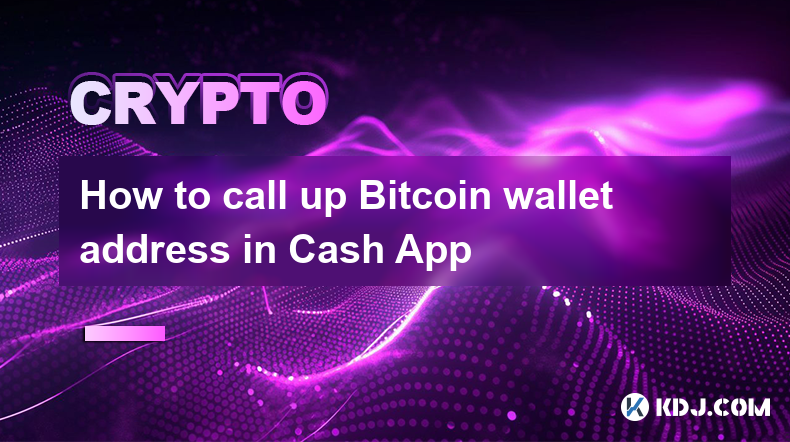
How to call up Bitcoin wallet address in Cash App
Mar 29,2025 at 05:29pm
Cash App, a popular peer-to-peer payment app, allows users to buy, sell, and hold Bitcoin. However, accessing your Bitcoin wallet address directly within the app isn't as straightforward as some other cryptocurrency wallets. This article will guide you through the process and address common concerns. Understanding Bitcoin Addresses in Cash AppUnlike so...
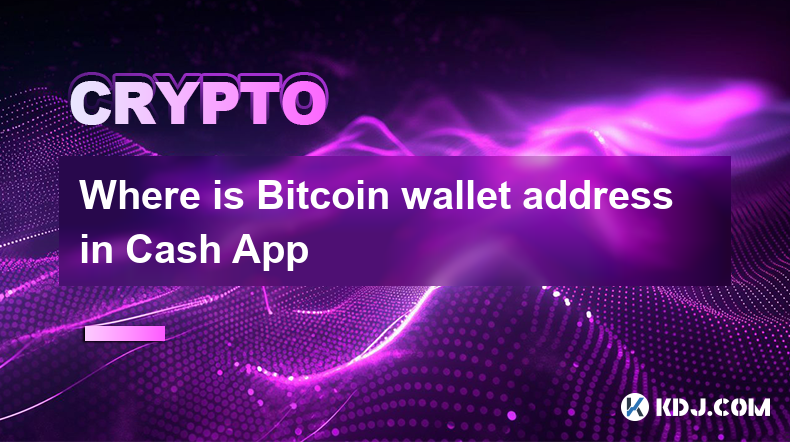
Where is Bitcoin wallet address in Cash App
Mar 29,2025 at 10:56am
? Cash App, a popular mobile payment service, allows users to buy, sell, and hold Bitcoin. However, finding your Bitcoin wallet address isn't as straightforward as with some other crypto wallets. Cash App doesn't display a traditional wallet address in the same way as dedicated Bitcoin wallets like Electrum or Exodus. This is because Cash App manages th...
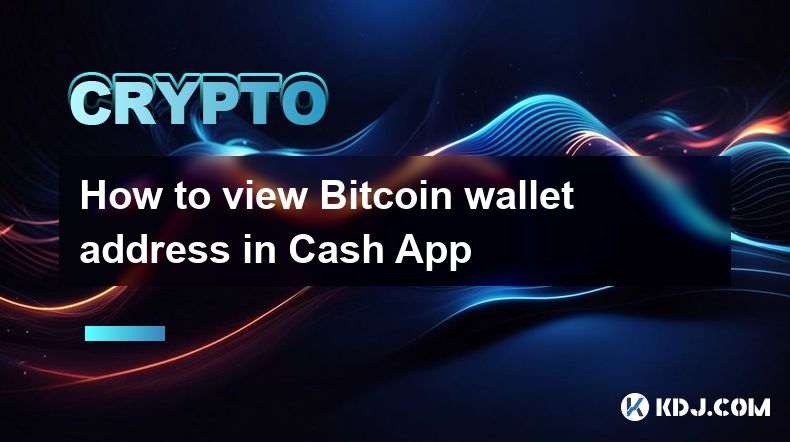
How to view Bitcoin wallet address in Cash App
Mar 29,2025 at 02:35pm
Cash App, a popular peer-to-peer payment app, allows users to buy, sell, and hold Bitcoin. However, accessing your Bitcoin wallet address isn't as straightforward as some other crypto wallets. This article will detail the process and address common concerns. Finding Your Bitcoin Receiving AddressUnlike some dedicated crypto wallets that prominently dis...
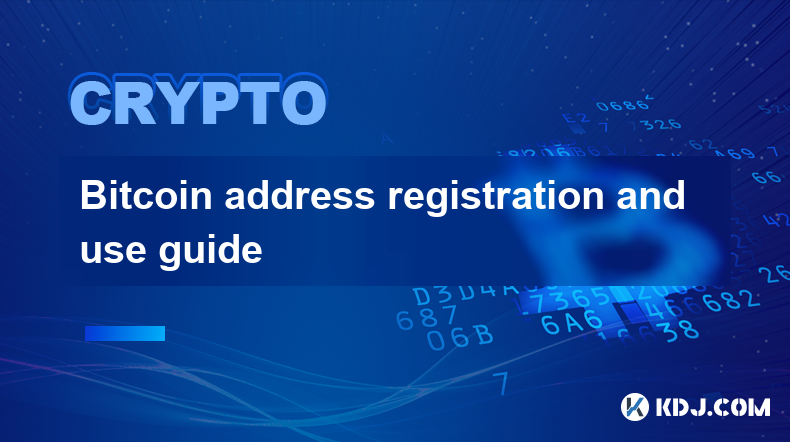
Bitcoin address registration and use guide
Mar 29,2025 at 02:21am
Understanding Bitcoin AddressesA Bitcoin address is essentially your unique identifier on the Bitcoin network. It's a string of alphanumeric characters, similar to an email address, but instead of receiving emails, it receives Bitcoin. Unlike bank accounts, you don't 'register' a Bitcoin address in a centralized system. Instead, it's generated by your ...
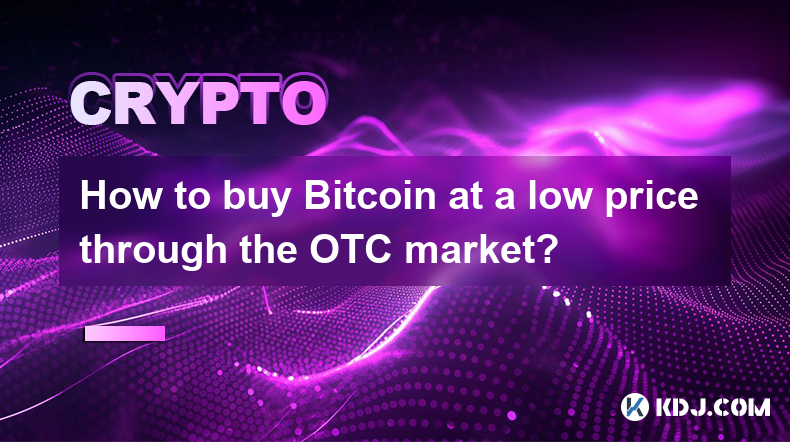
How to buy Bitcoin at a low price through the OTC market?
Mar 27,2025 at 08:56pm
Understanding the OTC Market for BitcoinThe over-the-counter (OTC) market for Bitcoin offers a way to buy and sell large quantities of Bitcoin outside of traditional exchanges. This market is primarily used by institutional investors and high-net-worth individuals due to the significant transaction sizes involved. Unlike public exchanges, OTC trades ar...

How to open a Bitcoin spot trading account
Mar 29,2025 at 12:43pm
Choosing the Right ExchangeOpening a Bitcoin spot trading account involves selecting a reputable cryptocurrency exchange. Several factors are crucial here. Consider the exchange's security features – look for two-factor authentication (2FA) and robust security protocols. Examine trading fees, as these can significantly impact your profits. Check the av...

How to call up Bitcoin wallet address in Cash App
Mar 29,2025 at 05:29pm
Cash App, a popular peer-to-peer payment app, allows users to buy, sell, and hold Bitcoin. However, accessing your Bitcoin wallet address directly within the app isn't as straightforward as some other cryptocurrency wallets. This article will guide you through the process and address common concerns. Understanding Bitcoin Addresses in Cash AppUnlike so...

Where is Bitcoin wallet address in Cash App
Mar 29,2025 at 10:56am
? Cash App, a popular mobile payment service, allows users to buy, sell, and hold Bitcoin. However, finding your Bitcoin wallet address isn't as straightforward as with some other crypto wallets. Cash App doesn't display a traditional wallet address in the same way as dedicated Bitcoin wallets like Electrum or Exodus. This is because Cash App manages th...

How to view Bitcoin wallet address in Cash App
Mar 29,2025 at 02:35pm
Cash App, a popular peer-to-peer payment app, allows users to buy, sell, and hold Bitcoin. However, accessing your Bitcoin wallet address isn't as straightforward as some other crypto wallets. This article will detail the process and address common concerns. Finding Your Bitcoin Receiving AddressUnlike some dedicated crypto wallets that prominently dis...

Bitcoin address registration and use guide
Mar 29,2025 at 02:21am
Understanding Bitcoin AddressesA Bitcoin address is essentially your unique identifier on the Bitcoin network. It's a string of alphanumeric characters, similar to an email address, but instead of receiving emails, it receives Bitcoin. Unlike bank accounts, you don't 'register' a Bitcoin address in a centralized system. Instead, it's generated by your ...

How to buy Bitcoin at a low price through the OTC market?
Mar 27,2025 at 08:56pm
Understanding the OTC Market for BitcoinThe over-the-counter (OTC) market for Bitcoin offers a way to buy and sell large quantities of Bitcoin outside of traditional exchanges. This market is primarily used by institutional investors and high-net-worth individuals due to the significant transaction sizes involved. Unlike public exchanges, OTC trades ar...
See all articles






















































































